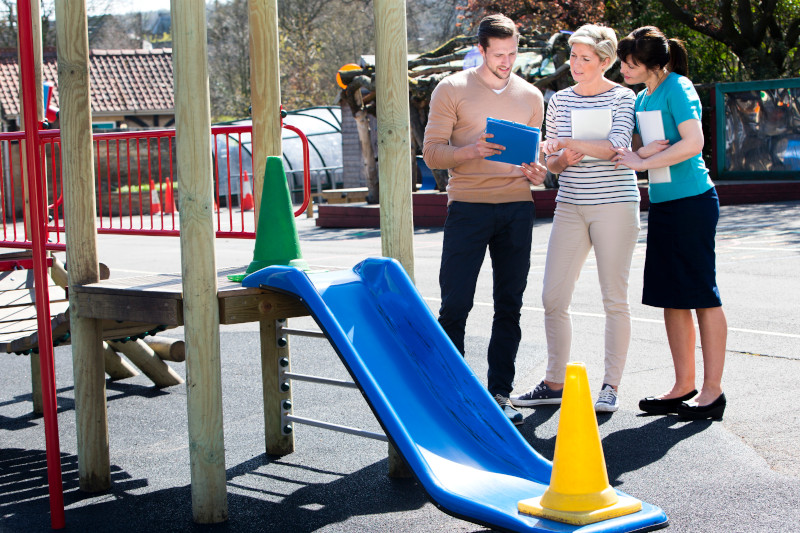Playground safety: maintenance and supervision

As the school year starts, the children at your school are no doubt excited to get back on the playground. Before they do so, however, it’s important to make sure you know how to best keep them safe. According to the Children’s Safety Network, more than 218,000 children are treated for playground-related injuries each year in the United States.
There are three main aspects to school playground safety: equipment maintenance, surface maintenance and supervision.
Equipment maintenance
Weather, normal wear and tear and rough play can cause equipment to become unsafe. You should have designated employees conduct routine inspections on equipment. They should:
- Take any broken structures out of service.
- Look for exposed bolts, which could cause an impalement hazard.
- Make sure equipment is free of sharp edges.
It’s also important to schedule more formalized inspections. CM Regent risk control consultants are Certified Playground Safety Inspectors (CPSI). Our risk control consultants perform a playground inspection during a routine risk control survey of your school’s buildings. This inspection uses the Consumer Product Safety Commission guidelines to identify hazards and recommend corrective actions to reduce the potential for playground injuries. This inspection should supplement the school’s playground maintenance plan.
As a CM Regent property insurance customer, you are also eligible to receive a free playground audit upon request. This audit is more in-depth and time-consuming than the playground inspection and should be scheduled for each playground area separately. It uses American Society for Testing and Materials International standards when making recommendations for playground hazards.
Surface maintenance
Proper surfacing is one of the best ways to prevent major playground injuries. Maintenance best practices, however, depend on the type of surfacing you have. The two kinds of playground surfacing are loose-fill and unitary.
Loose-fill surfaces include:
- Engineered wood fiber.
- Shredded rubber mulch.
- Pea gravel.
- Sand.
Unitary surfaces include:
- Bond-in-place rubber.
- Interlocking rubber tiles.
- Poured-in-place rubber.
To maintain and repair loose-fill surfacing, you just need to add surfacing to any low-fill areas and rake them smooth. You should always measure to make sure your surfacing is at least 6 inches deep for rubber mulch and 9 inches deep for pea gravel, wood mulch and sand.
If you have unitary surfacing, you need to check for pits, cracks and other damage to the surface. If there is damage, you will likely need to call a competent contractor to help repair it. Also, these systems have a particular lifespan, and a plan should be in place to budget for replacement, before hazards become prominent.
Supervision
It’s important to always have an adult supervisor present when children are on the playground. Moreover, these supervisors should be actively watching the children, and not focused on their phones or other distractions.
Some of the most important tips include:
- Check equipment at the beginning of every playground session. Weather can be rough on playground equipment, and you never know when a piece of equipment will become unusable. Perform a walk-through of the equipment before children start playing, and make sure they know that any broken equipment is off-limits.
- Make sure children are wearing appropriate footwear. This is especially important during the summer months, when children tend to wear potentially dangerous types of shoes. Flip-flops or sandals can be hazardous on certain types of equipment.
- Prohibit the use of helmets, lanyards and drawstrings. Bicycle helmets, lanyards and drawstrings on clothing pose entanglement and strangulation hazards while using playground equipment and should be prohibited.
- Check for unsafe modifications. Children can be creative with the ways they use playground equipment—and that creativity often results in unsafe conditions. When supervisors are performing their walk-through before the children start playing, they should also check for unsafe modifications, such as ropes tied to equipment.
- Respond to accidents quickly. No matter how vigilant a supervisor is, injuries do happen—and that’s when the adult on the playground becomes the most important person to a child. Supervisors should always have a first-aid kit handy.
Take your playground safety seriously, and you have a much better chance of avoiding a trip to the emergency room. For more playground safety information and ways to keep your students safe, check out these resources.




